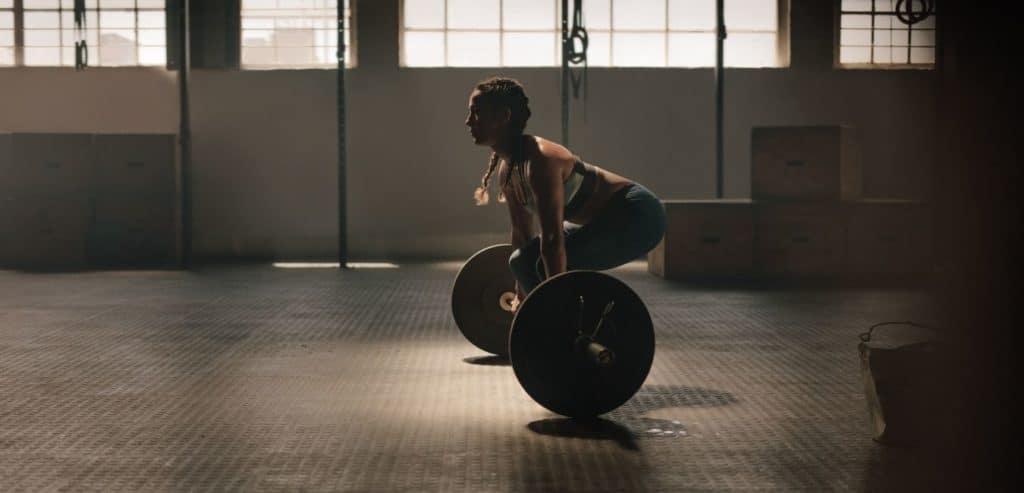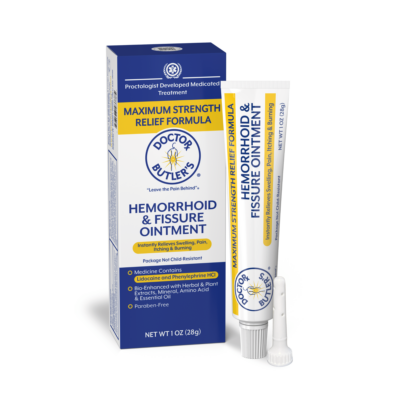Those who lift weights are no strangers to pains for gains. Achy muscles are to be expected, but sometimes lifting causes enough strain for weightlifting hemorrhoids to develop.
You look forward to each workout, but the discomfort of weightlifting hemorrhoids can be an annoying distraction as you focus on your form.
You may be used to working through the pain, but hemorrhoids should be addressed so the problem doesn’t worsen. Weightlifting hemorrhoids don’t necessarily mean that you have to stop doing the workouts you enjoy.
Today, we’ll share some advice on what to do to cope with this problem plus tips on lifting weights with hemorrhoids.
Can Working Out Cause Hemorrhoids?
So how do you end up with hemorrhoids? Do you get hemorrhoids from working out? These are common questions from those who do regular weightlifting.
Perhaps you’ve heard mixed information about how hemorrhoids from working out happen with lifting weights. Understanding the factors that lead to hemorrhoids helps to clear up the confusion.
Hemorrhoids (also referred to as “piles”) occur when veins in the wall of the rectum swell. Symptoms can worsen from continued irritation or difficult bowel movements.
Signs of Internal Hemorrhoids
Internal hemorrhoids form inside the anus with the potential to become external. Common symptoms may include:
- Bleeding without pain – bright red blood on the toilet tissue or in the toilet bowl
- Itching or irritation
- Changes in Bowel Movements
Signs of External Hemorrhoids
External hemorrhoids form under the skin around the anus due to continued, excessive pressure coming from the internal hemorrhoids. Common symptoms include:
- Itching or irritation in the anal region.
- Pain, or discomfort.
- Swelling
Signs of Thrombosed Hemorrhoids
A hemorrhoid is considered thrombosed once an external hemorrhoid condition has worsened to the point where a blood clot forms. This is typically noted by one or more of the following:
- A hard lump near the anus.
- Inflammation and Swelling
- Moderate to Severe pain
While working out can contribute to hemorrhoids, it’s not always the cause. Hemorrhoids are formed from pressure applied to the veins alongside the rectum. If during your workouts, especially weightlifting, your movement causes strain in the rectal area, this may bring about hemorrhoids.
However, straining in the bathroom is usually more to blame for hemorrhoids than lifting weights. The combination of chronically pushing a hard stool or sitting on the toilet too long is the main factor for hemorrhoids to develop.
A poor diet, lack of hydration, or health problems create diarrhea and/or constipation. Both of these conditions affect the rectal area to the point that those veins will swell. This swelling causes symptomatic hemorrhoids.
So weightlifting can contribute to hemorrhoids if your form puts too much pressure on your lower half (particularly the rectal area), or when constipation occurs with not enough hydration after the workout.
If you think your workout habits are part of the reason you now have hemorrhoids, don’t worry. There are some simple adjustments you can make to resolve “weightlifting” hemorrhoids.
Weightlifting Exercises to Avoid With Hemorrhoids

When you have a case of hemorrhoids, certain actions can make them worse. With the endorphin rush of a good workout, you may not realize certain motions will make things worse. Some may ask, “Can I lift weights with hemorrhoids?”
For those with an active lifestyle, lifting weights when dealing with symptomatic hemorrhoids should be done with care or better yet completely avoided to prevent further injury.
Of all the ways you might lift weights, compound lifts such as squats with bent-over barbell rows, or deadlifts are among the riskiest. Lifters challenge themselves by adding more weight. When the barbells are heavier, that means more pressure on your rectal muscles if not done carefully.
Lifting puts continuous pressure on your rectal area and can lead to flareups when it’s not done with the correct form. Flareups will worsen depending on how long your sessions last and how many times you lift throughout the week.
To maintain the health that mitigates hemorrhoids, be careful when lifting anything. Avoid constipation by eating a healthy diet and rehydrating after a workout.
Pain ease
No burning . . stays put good solid product for easing pain of private area.
Verified ReviewerKeep Your Gains Despite Hemorrhoids
You don’t have to go through a major overhaul of your life if you get hemorrhoids from weightlifting, but adjustments do need to be made. Staying active helps the healing process so depending on your circumstances you should continue some form of mild to moderate low impact exercises such as walking even when dealing with many types of hemorrhoids.
Trying to avoid causing or exacerbating hemorrhoid symptoms in the first place is the best thing. To do weightlifting carefully, you must use proper form. This involves slow, controlled movements while using good posture. Other muscles can compensate to prevent muscle contractions or strain around the anus.
Minding your breathing and engaging your core is also effective with muscle control. While you lift or squat, push air out against your abdominal wall instead of down toward your anus. Remember not to hold your breath. Exhale as you lift the weight, and inhale as you lower it. Maintain good posture as you avoid straining with even distribution of muscle work.
If maintaining proper form during compound lifts is too difficult, you might change to alternative exercises to temporarily accommodate for your hemorrhoids. Reduce the amount of weight you lift or limit your workouts to those that do not put pressure on the lower extremities. For example, for squats and hemorrhoids, lowering too far down puts pressure on the anal area, so limit how low you dip.
One of the best exercises for hemorrhoids is Kegels. These strengthen your pelvic floor to protect your rectal muscles from strain during exercise.
As you go through the healing process, you might consider reducing the number of workout sessions and take a rest day every other day. You should definitely continue to try and exercise, but make the necessary adjustments to reduce the risk for further issues.
Treat Hemorrhoids to Continue Exercising!
You’ve worked hard to reach your fitness goals. Hemorrhoids shouldn’t get in the way. Adjust your routine to reduce pressure on your rectal area. Wear loose and breathable underwear and bottoms that don’t cause further irritation to the affected area.
Remember to listen to your body. If the pain of the hemorrhoids is intense during workouts, more adjustments need to be made, and perhaps a rest day until it’s healed enough to continue.
Outside of working out, you should maintain other proactive habits like keeping a diet with plenty of fiber and staying hydrated. Keep the affected area clean. Avoid straining or sitting for too long on the toilet.
Our products are specially formulated for faster healing using the best ingredients available. Doctor Butler’s Hemorrhoid & Fissure Ointment is a topical treatment containing prescription strength Lidocaine which has been developed by a proctologist. Using a proprietary blend of the most effective ingredients, our cream helps you heal quickly so you can resume your usual lifestyle.
Also, our soothing wipes keep the affected area clean while relieving irritations. Hemorrhoids can be especially uncomfortable during a bowel movement, so having wipes that comfort rather than sting is handy to keep around the toilet or on the go!
With consistent treatment, hemorrhoids should clear up within a few weeks. If your hemorrhoids continue or worsen) you should contact your doctor.
Learn how to keep up your gains while dealing with your pains. Be sure to get plenty of “reps” of Doctor Butler’s Hemorrhoid & Fissure Ointment treatments.

